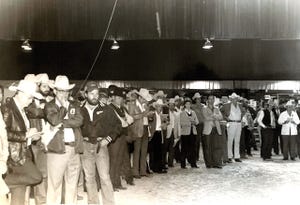Numbers Catch Up To Cattle Expectations
It look about a month longer than statistics and common sense said it should, but last week lent proof to the fact that calf and feeder supplies are getting as tight as folks thought they should.
June 27, 2011

It look about a month longer than statistics and common sense said it should, but last week lent proof to the fact that calf and feeder supplies are getting as tight as folks thought they should.
Both stocker calves and feeders traded sharply higher at auction, buoyed by the previous Friday's monthly Cattle on Feed (COF) report that was as bullish as the previous month's report was unexpectedly bearish.
You'll recall that the May COF report stunned folks with a placement number 10% larger than in 2010, begging the question of where all those cattle were coming from that the numbers said shouldn't be there.
For instance, analysts with USDA's Agricultural Marketing Service (AMS) said at the time, "The smallest cowherd in over 60 years continues to produce eye-opening numbers of feeder cattle, which can only be rationalized through multiple births or funny math."
Though the latter was an easy target, those analysts also pointed to rational reasons for the illogical jump in numbers. "…Perhaps the best explanation is that few can completely fathom just how dry the Southwest has become and the reality that there has been a huge displacement of cattle from pastures to confinement operations," analysts explained. "Texas recently marked the driest seven-month span on record, which goes back past the Dust Bowl Days and all the way back to the cattle drives of the 1800s."
Likely it was that, and the industry finding one last round of creative ways to pull cattle forward, which has been going on for the better part of the year.
Then came the June COF. Placements (1.81 million head) in May were 11% less than a year earlier, a good 3%-4% more bullish than the trade was expecting. Marketings (2.0 million head) in May were up 7% year over year, at least 2%-4% better than pre-release estimates. All told, June 1 COF inventories (10.9 million head) are 4% higher than last year, which was also more bullish than the market anticipated.
That's what fueled the heady run on live- and cattle-futures markets this past week (see "Feeder Calf Prices Charge Ahead") that boosted feeder price $5-$10 higher and calf prices $2-$10 higher.
That's what now brings the expected though delayed focus to what folks have been chattering about for a couple of years now -- where are the cattle going to come from?
According to the Livestock Marketing Information Center (LMIC) earlier this month, weekly beef cow slaughter so far this year is about 4% less than last year, though still 14% higher than the five-year average.
"Although year-to-date beef cow slaughter has been above a year ago in the Southern Plains (up about 13%) due to severe drought conditions, beef cow slaughter in all other regions has declined," LMIC analysts say. “So far this year, beef cows have only accounted for about 52% of the total cow slaughter mix compared to 55% for the same period in 2010. Importantly, in mid-May, beef cow slaughter was 8% below the same week in 2010."
Total beef and dairy cow slaughter is up about 1% so far this year, but is still 17% higher than the five-year average.
About the Author(s)
You May Also Like


.png?width=300&auto=webp&quality=80&disable=upscale)


